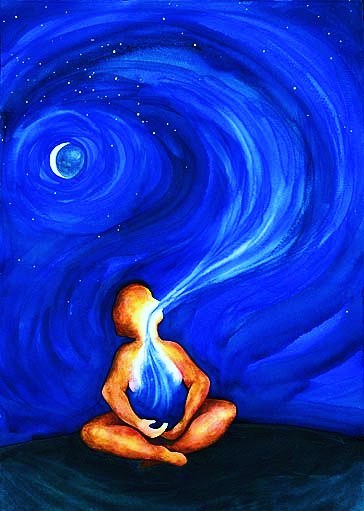This question is simple, so you’d naturally expect a simple answer. Sorry. But we’ll break it down to the simplest terms possible.
WHY DO WE BREATHE?
THE SHORT ANSWER:
– We breathe to get oxygen to our cells so that they can make energy.
THE MEDIUM ANSWER
– We breathe to get oxygen to our cells so that they can use oxygen to make cellular energy (ATP). Cells do this by completely breaking down glucose (sugar) into carbon dioxide (which you breathe out) and water.
THE LONG ANSWER
– We breathe to get oxygen to our cells so that they can perform cellular respiration.
- glycolysis
- synthesis of Acetyl-CoA
- Krebs cycle
Glycolysis
The first step, glycolysis, occurs in the cytoplasm of most cells, and the word itself describes the process – ‘glyco’ = sugar and ‘lysis’ = breaking down. Glycolysis involves the splitting of a six-carbon glucose into two three-carbon molecules of pyruvic acid and results in a net production of two molecules of ATP.
Synthesis of Acetyl-CoA
Pyruvic acid is then transformed into the molecule acetyl-CoA. This is one of the cellular respiration reactions that produces CO2, the gas that we breathe out when we exhale. In addition to acetyl-CoA and CO2 waste, two molecules of the electron carrier NADH are produced. The energy of electron carriers will be used later, during electron transport.

Kreb’s Cycle
Also known as the Citric Acid Cycle, this complex series of reactions transfer much of the energy left in the bonds of acetyl-CoA to more electron carriers (NAD+ and FAD). The reactions of the Krebs Cycle occur in the mitochondria of eukaryotes and result in two more molecules of ATP, two molecules of FADH2, six molecules of NADH, and more CO2 waste.
Electron Transport Chain
The most significant production of ATP occurs through a stepwise release of energy from the series of oxidation-reduction reactions in the electron transport chain. The electron transport chain consists of several membrane-bound carrier molecules that pass electrons from one to another and ultimately to final electron acceptor, oxygen (O2). We need to breathe in oxygen in order to complete electron transport.
Energy from electrons is used to pump protons (H+) across the inner membrane of the mitochondria, establishing a proton gradient, a difference in ion concentration on either side of a membrane. Proton gradients have potential energy available for cellular work. Protons flow down this gradient, through protein channels that phosphorylate adenosine diphosphate (ADP), adding energy to create adensoine triphosphate ATP.
By the end of aerobic cellular respiration, a total of 38 molecules of ATP are formed from one molecule of glucose.



Amazing Article Brother. To be honest, breathing is everything. Take a deep breath and see, don’t forget! JustBreathing.in – I will also post your word in My Blog.
Just Breathing ../\..
because it is important to breathe
I believe that is one of the most significant info for
me. And i am glad reading your article. However want to commentary on some common things, The web site taste is ideal, the
articles is really nice :D. Excellent job, cheers.
One more medium and easy answer fpr level 5-7=
We breath to digest the food,the digested food materialsare break down into glucose molecules whixh are break down into enegy.this energy is stored in the form of *ATP* from whicg the energy is relesed by the process of breathing…….. 😀
Interesting °-°
100% stonks
Grate if it was at school you would have full marks
i love to breath
Deep Thoughts = Deeb Breath…
Live!!!
ok:)
Interesting, just thought of add some food for thought.. recently some scientists created “injectable” oxygen molecules that would replenish the blood with oxygen just like breathing but without the need for actual
Breathing.. At first though this sounds awesome cause you could stay under water for about 30min like this..BUT the problem is that the breath reflex is triggered when the co2 threshold in our bodies is reached.. So while breathing can be “overcome” for now the need expel poisonous co2 is vital 😉
Are you Mackenzie Ziegler’s brother
lol
ATP rocks